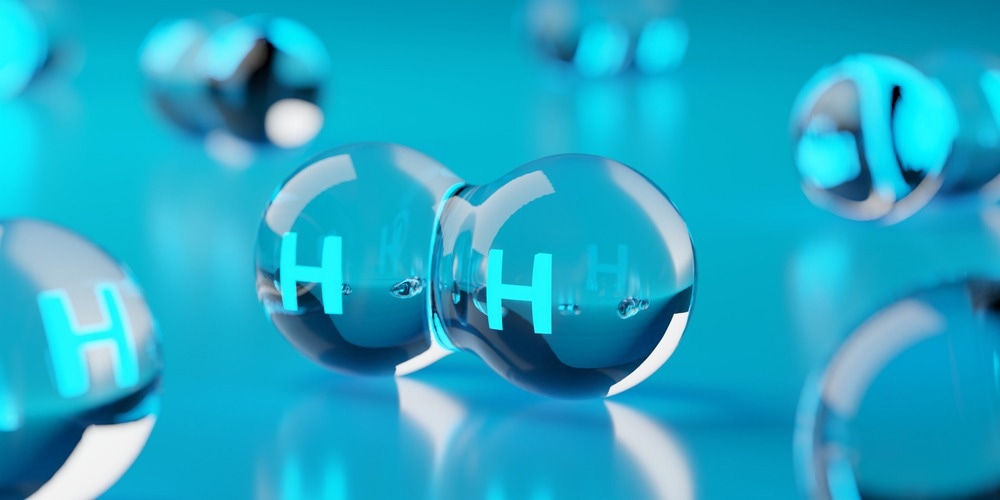A paper published in the Nano Express journal offers a comprehensive investigation into the best carbon nanotube (CNT) structure for Pt-NPs/CNTs/Gr H2 sensors.

Study: Probing the role of CNTs in Pt nanoparticle/CNT/graphene nanohybrids H2 sensors. Image Credit: Shawn Hempel/Shutterstock.com
The films were developed using component CNTs having diameters from 1 nm for single-wall CNTs (SWCNTs), to 2 nm for double-wall CNTs (DWCNTs), and 10-30 nm for multi-wall CNTs (MWCNTs).
CNT-based H2 Sensors
CNTs are hexagonal frameworks of carbon atoms with diameters ranging from 1 nm to 100 micrometers. To put it simply, a CNT is a sheet of graphene rolled up into a cylindrical form. SWCNTs are composed of one graphene cylinder layer, whereas MWCNTs consist of multiple layers.
Owing to their intrinsic qualities like small dimensions, excellent strength, remarkable thermal and electrical conduction, and a large specific area for adsorption and desorption of gaseous molecules, CNTs have the potential to revolutionize the sensor industry.
Pristine SWCNTs cannot produce good electronic interactions with most gas molecules; therefore, they do not show high sensitivity to H2 molecules. To address this limitation, the CNTs may be functionalized with catalytic nanoparticles composed of an adequate material like palladium (Pd), platinum (Pt), silver (Ag), and gold (Au).
Decorating CNTs with nanostructures of the catalytic platinum metal has proven to be effective in improving H2 sensor performance by allowing for greater H2 molecule chemisorption and subsequent breakage of the H-H bonds. Ultimately, this decreases platinum's work function, resulting in charge transport from hydrogen to CNTs.
Enhanced performance in CNT-based H2 sensors has been reported using catalytic Pt nanoparticles (NPs); however, additional sensitivity improvement via design optimization of the H2 sensor is essential.
Importance of Graphene in H2 Sensors
Graphene has excellent charge mobility in ambient conditions. Therefore, its use in H2 sensors significantly increases charge transference by channeling signals from single-wall CNTs to electrodes via graphene. This removes the need to use numerous CNT-CNT connections with electrodes. Since graphene is naturally semi-metallic, it establishes an Ohmic contact with palladium, gold, and other typical electrodes.
An H2 sensor composed of a CNT layer, a three-dimensional electrode having a graphene heterostructure, imprinted with catalytic platinum NPs (Pt-NPs/CNTs/Gr), brings together the upsides of a relatively large sensing area, excellent charge mobility because of the CNT/graphene three-dimensional electrode, and the catalytic behavior of the platinum nanoparticles.
On comparing the Pt-NP/SWCNT/Gr H2 sensors with those that do not contain graphene, an increase of more than 50% in sensitivity towards hydrogen was observed. This significant improvement highlights the value of engineering signal pathways on three-dimensional CNT/graphene electrodes.
Single-Wall CNTs Vs. Double-Wall and Multi-Wall CNTs
Single-wall CNTs were selected because they possess the highest aspect ratio of any CNT with a similar length, resulting in the maximum possible effective detection area.
However, SWCNTs have the tendency to bundle up with a 10 nm mean diameter, which significantly lowers the surface area of the SWCNT sheets.
Schottky junctions are present in the inter-SWCNT junctions between two types of SWCNTs and may impede charge transfer in SWCNT-based H2 sensors.
These drawbacks indicate that single-wall CNTs may not be able to achieve the optimum detection area and may exhibit poor charge transference. Both of these parameters are crucial for high-performance H2 sensors.
The CNT bandgap varies inversely with their diameter. Therefore, CNTs having bigger diameters, such as DWCNTs and MWCNTs, are expected to show better electrical conductivity.
With an increase in CNT diameter, the problem of CNT bundling also becomes less significant because of lower aspect ratios.
Importance of the Research
The Pt-NPs/CNT/graphene nanohybrid H2 sensors need a large effective detection area and excellent conductivity for achieving high performance. Therefore, a quantitative evaluation of the impact of CNT diameter as well as electrical conduction on the effectiveness of H2 sensors is critical for achieving an ideal H2 sensor design.
Findings of the Study
In this work, the team concluded that the Pt-NPs/CNTs/Gr H2 sensor performance is a tradeoff between the effective detection area and electrical conduction. The choice of CNT had a profound impact on H2 detection.
The greatest H2 sensor performance was achieved by using a multi-wall CNT sheet having a 10 nm CNT diameter. Moreover, the highest response was found to be around 26% for a 10% hydrogen concentration.
Compared to single-wall CNT and double-wall CNT films that are hampered by bundling of CNTs, the multi-wall CNT film possesses a comparable detection area, but its electrical conductivity is much superior. These findings highlight the vital role of high electrical conduction of multi-wall CNTs for effective charge transport.
Reference
Alamri, M., Liu, B., Berrie, C. L., Walsh, M., & Wu, J. Z. (2022). Probing the role of CNTs in Pt nanoparticle/CNT/graphene nanohybrids H2 sensors. Nano Express. Available at: https://iopscience.iop.org/article/10.1088/2632-959X/ac843d
Disclaimer: The views expressed here are those of the author expressed in their private capacity and do not necessarily represent the views of AZoM.com Limited T/A AZoNetwork the owner and operator of this website. This disclaimer forms part of the Terms and conditions of use of this website.